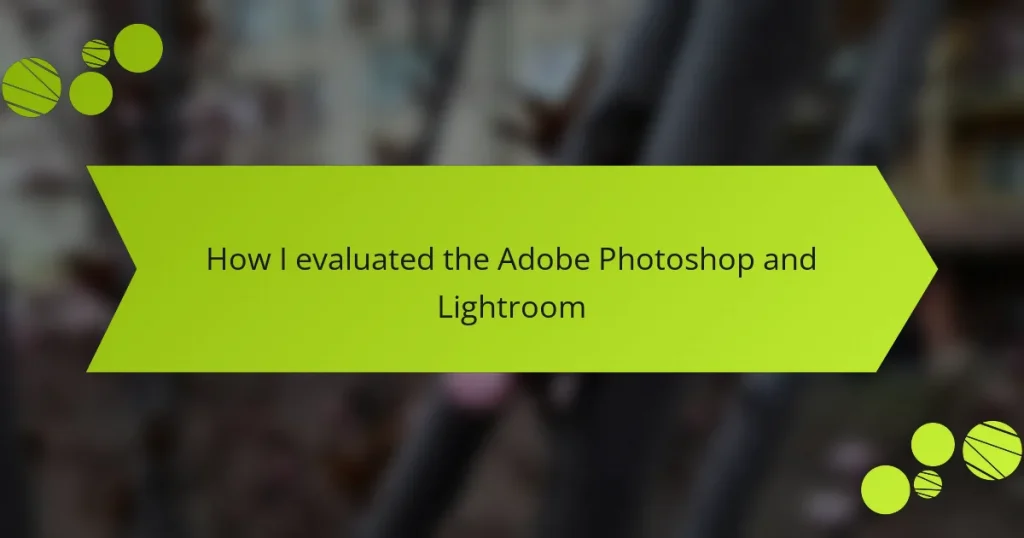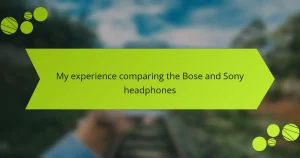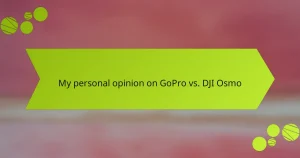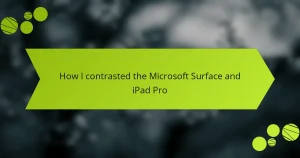Key takeaways
- Adobe Photoshop offers extensive editing features like layer-based editing for complex manipulations, ideal for intricate design work.
- Lightroom specializes in photo organization and batch editing, providing a user-friendly interface for managing large collections efficiently.
- Both programs support non-destructive editing, allowing users to experiment without losing original images, enhancing creative possibilities.
- Lightroom’s presets streamline the editing process, enabling cohesive looks across multiple images in minimal time.
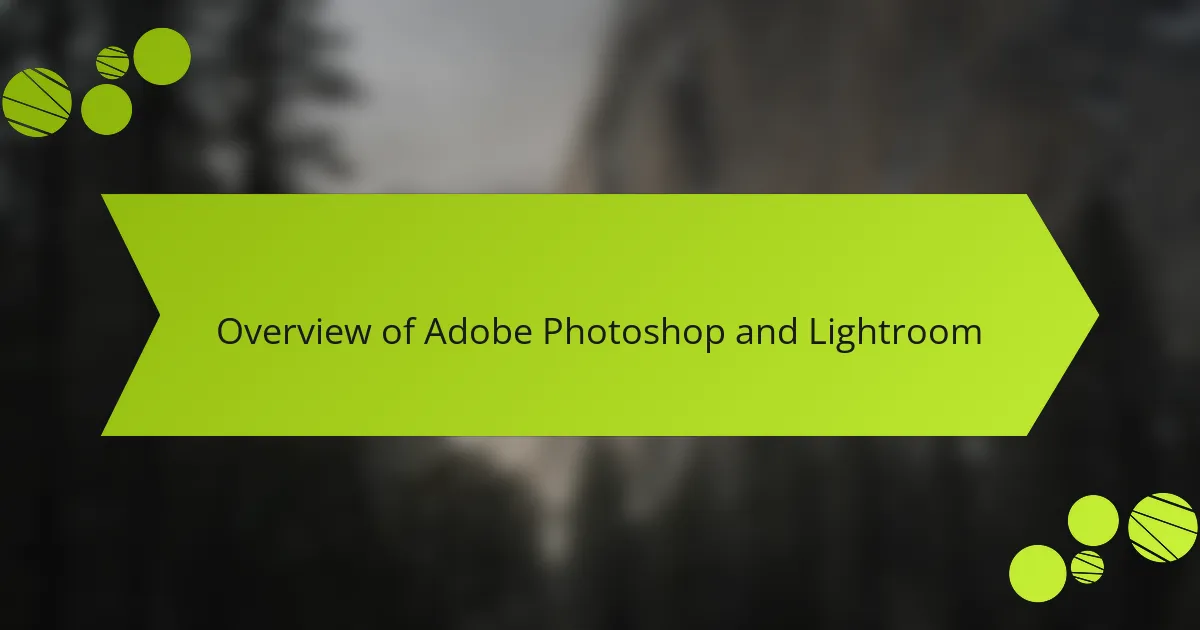
Overview of Adobe Photoshop and Lightroom
Adobe Photoshop and Lightroom are two powerhouse tools for both casual and professional photographers. Photoshop is known for its extensive editing capabilities—think of it as the Swiss Army knife of image manipulation. I still remember the first time I began exploring the software; the depth of its features was both exciting and overwhelming.
On the other hand, Lightroom offers a streamlined approach to photo organization and basic editing. It became my go-to for quickly enhancing images while maintaining a consistent workflow. Have you ever found yourself sifting through hundreds of photos after a shoot? Lightroom’s cataloging feature is a lifesaver for me, making it easy to find and manage my images.
Both programs have unique strengths that cater to different needs. While Photoshop excels at intricate design and retouching, Lightroom shines in managing large collections of photos efficiently. This balance is what makes them a dream team for anyone serious about photography.
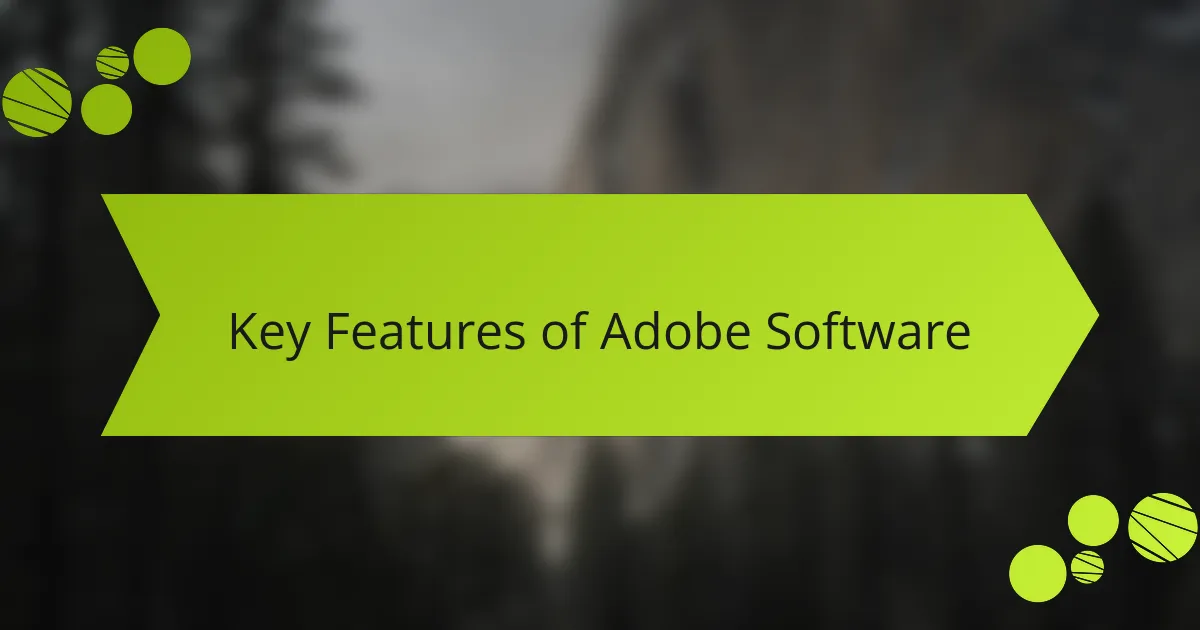
Key Features of Adobe Software
One of the standout features of Adobe Photoshop is its layer-based editing system. This allows me to work on images non-destructively, meaning I can tweak and adjust various elements without permanently altering the original photo. I recall a time when I accidentally deleted a crucial part of an image I was editing. Thanks to layers, I was able to restore it in a matter of clicks—what a relief!
In contrast, Lightroom’s powerful preset functionality has been a game changer in my editing process. I can apply specific looks to a batch of photos in seconds. Do you ever wish you could give your entire gallery a cohesive feel? With Lightroom presets, I transform images to match a specific mood or style quickly, which is indispensable during busy editing sessions.
Moreover, the photo-sharing capabilities in both programs are impressive. Whether I’m sending images straight from Lightroom to social media or using Photoshop’s export settings for high-quality prints, sharing my work feels seamless. I remember how proud I felt sharing a project online that I had spent hours perfecting—it’s moments like those that remind me why I love photography so much.
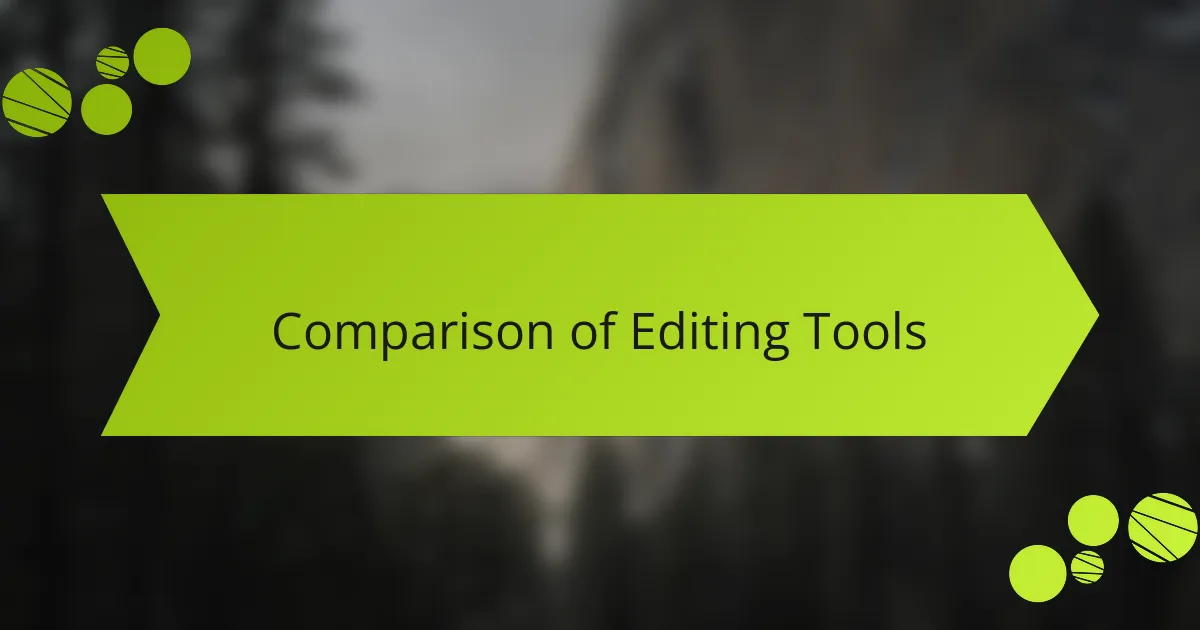
Comparison of Editing Tools
When diving into the comparison of editing tools in Adobe Photoshop and Lightroom, I found each program excels at different tasks. Photoshop is like that versatile Swiss Army knife; it offers intricate editing capabilities, which I appreciate during intense projects. I remember one time I was blending layers to create a composite image; the precision tools in Photoshop made a huge difference, giving me that creative freedom I craved.
On the other hand, Lightroom is a lifesaver when it comes to batch editing and organization. I often use Lightroom after a photo shoot for its straightforward workflow and user-friendly interface. There was a moment when I had hundreds of photos to edit from a family event, and Lightroom allowed me to sort, enhance, and export them seamlessly. The ability to see changes in real time while manipulating sliders is just incredibly satisfying.
-
Photoshop:
- Ideal for complex edits and manipulations.
- Extensive toolset for retouching and graphic design.
- Layer-based editing allows for advanced creations.
-
Lightroom:
- Excellent for organizing large photo libraries.
- Quick batch editing capabilities save time.
- User-friendly interface with real-time adjustments.
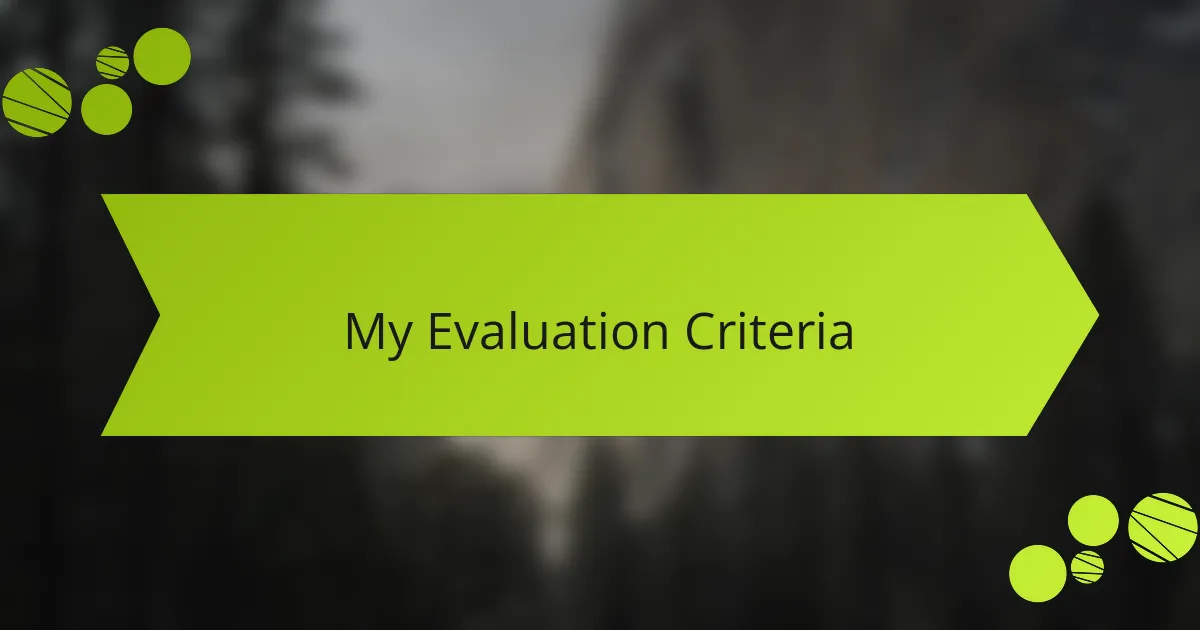
My Evaluation Criteria
When evaluating Adobe Photoshop and Lightroom, I based my criteria on how effectively each program meets my editing needs. I focused on usability, particularly during busy editing sessions. Have you ever struggled with a complex tool that slowed you down? I know I have. A user-friendly interface can be a real lifesaver, especially when I’m under pressure to meet deadlines.
Another key aspect I considered was the range of features available. For instance, I paid close attention to how well each software handles batch processing. In the past, I faced a mountain of photos to edit, and Lightroom’s ability to apply consistent tweaks across multiple images transformed a daunting task into a manageable one. That kind of efficiency can make all the difference for photographers like me.
Lastly, I reflected on the creative freedom each platform provides. Photoshop excels in granular editing, which I often crave for artistic projects. I vividly remember the thrill of crafting a digital piece where every detail mattered. Evaluating whether I felt inspired or stifled while using these tools was essential. After all, my passion for photography should be nourished, not hindered!
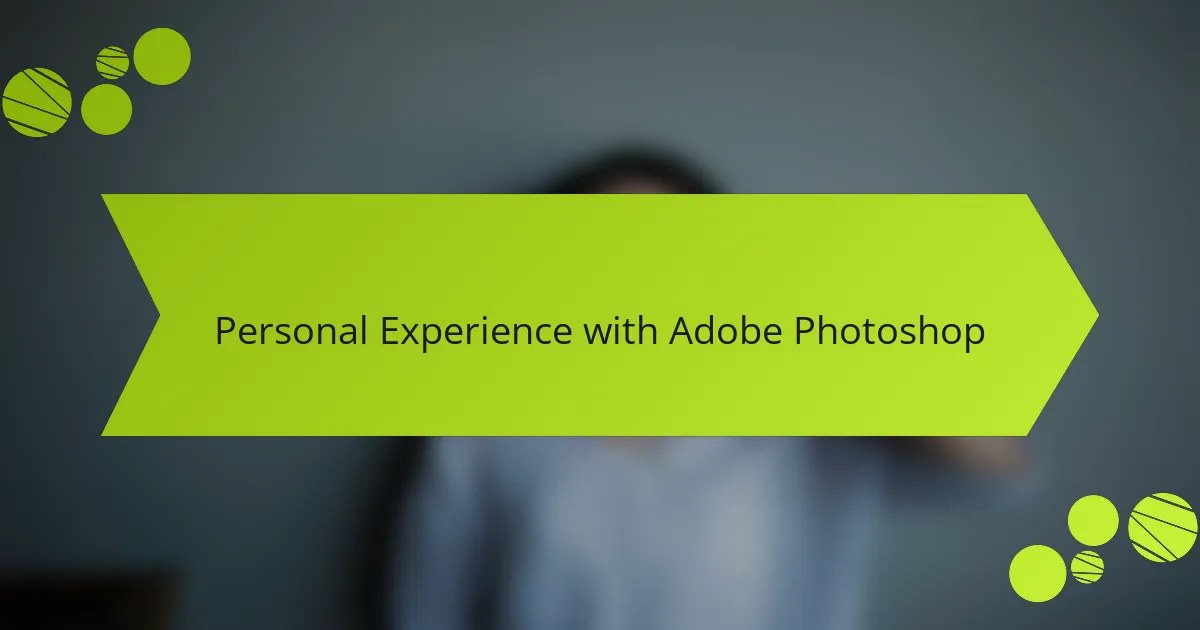
Personal Experience with Adobe Photoshop
I’ve had quite the journey with Adobe Photoshop. One of my first major projects involved restoring an old family photograph. I remember feeling a mix of excitement and apprehension as I navigated the intricate tools. With the healing brush and clone stamp, I was able to bring back so much detail. That experience taught me how powerful Photoshop can be, especially when you’re trying to breathe new life into cherished memories.
Over time, I’ve also come to appreciate the vast array of filters available in Photoshop. There was a moment when I experimented with layering textures to give a photo a more artistic feel. It was exhilarating to see how I could transform a simple image into something visually captivating. Have you ever played with filters and been surprised by the result? That thrill of discovery is one of the reasons I keep returning to Photoshop for my creative endeavors.
Photoshop isn’t just a tool; it’s become an extension of my artistic vision. I recall working on a graphic design project where I combined photography with digital art. This blend allowed me to push boundaries and explore concepts that were previously just ideas in my head. Each time I open the software, I feel that sense of possibility. That constant learning and evolving is what fuels my passion in photography and digital art.
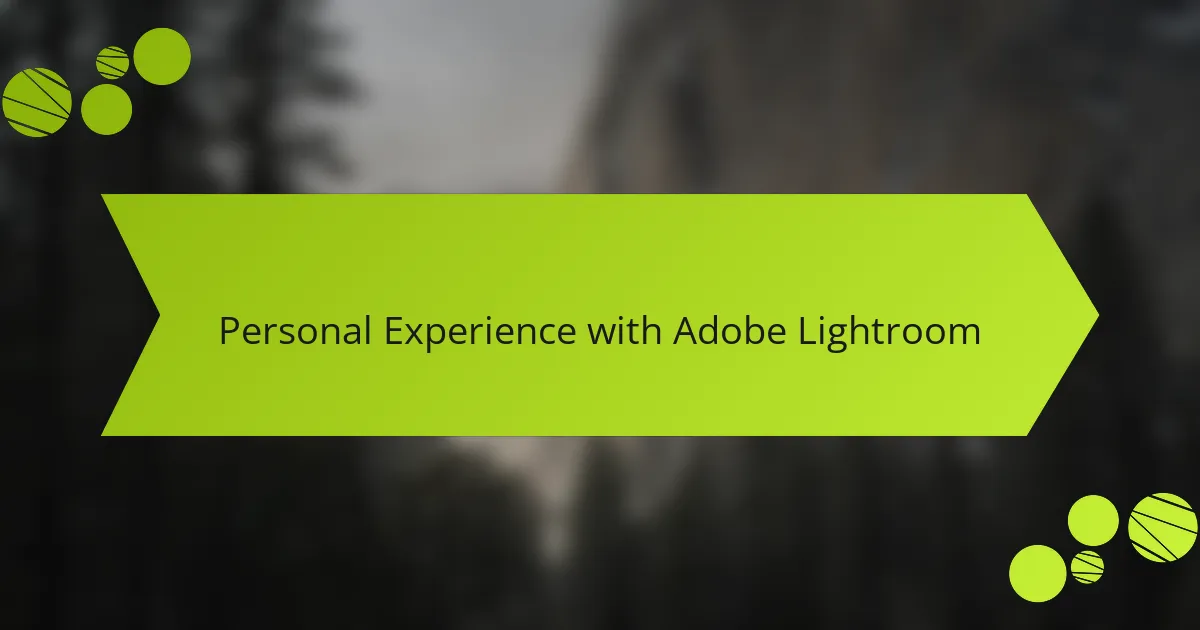
Personal Experience with Adobe Lightroom
Exploring Adobe Lightroom has been quite a transformative experience for me. The first time I imported my photos into Lightroom, I felt like I had just opened a treasure chest. The intuitive interface made it easy to organize my images, and I was instantly impressed by the variety of editing tools available at my fingertips. I still remember enhancing my favorite landscape shot, bringing out the vibrant colors I had initially captured, which felt like giving new life to the scene.
One of the things I appreciate most about Lightroom is its non-destructive editing capabilities. This means that I can experiment with my images without worrying about permanently altering the original file. It’s a game-changer for someone like me, who loves to explore different styles and techniques. The ability to return to the original image anytime encourages creativity and experimentation.
Key features of Adobe Lightroom:
- Non-destructive Editing: You can edit photos freely without losing the original images.
- Powerful Organizing Tools: Quickly categorize and sort images, making your workflow more efficient.
- User-Friendly Interface: Even beginners can navigate and utilize features with ease.
- Presets and Filters: Save time with customizable presets that help you achieve certain looks effortlessly.
- Seamless Integration with Photoshop: Easily move projects between Lightroom and Photoshop for advanced editing options.
